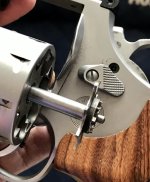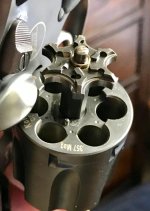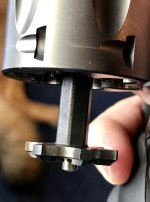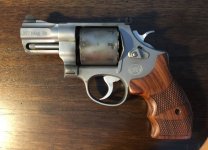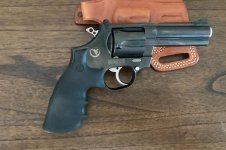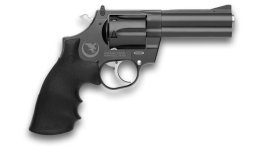1961MJS
Member
Hi
I currently own an older Model 19 in .357 and I primarily shoot .38 Specials in it. I'd like to get an L-frame to shoot .357 magnums in full time. I'm looking at this gun as a woods carry gun, concealed in cooler weather, not so much in the Oklahoma summers. The 686 is supposed to be slightly larger than the old K-frames so you can shoot .357 in it every day. I'm looking at between 500 and 2000 rounds a year. I've narrowed my choices down to two models:
Model 686 Plus 3-5-7 Magnum Series
SKU: 150854.
Model 686 Plus 3-5-7 Magnum Series | Smith & Wesson
Model 686
SKU: 164222
Model 686 | Smith & Wesson
In my opinion, the 686 6 shot should be a stronger frame. Another shooter said that the 686 7 shot would be stronger because the lower half of the cylinder / frame match is between two chambers on steel, not on the chamber itself. Which would be stronger? At 2000 rounds a year, is this a concern? The 3-5-7 comes in a 5 inch barrel as opposed to the 686 with a 4 inch barrel. I'm good sized, so hiding another inch of barrel wouldn't be a problem.
Recommendations?
Thanks, I looked for this information in this forum, but didn't find what I was after.
Thanks
I currently own an older Model 19 in .357 and I primarily shoot .38 Specials in it. I'd like to get an L-frame to shoot .357 magnums in full time. I'm looking at this gun as a woods carry gun, concealed in cooler weather, not so much in the Oklahoma summers. The 686 is supposed to be slightly larger than the old K-frames so you can shoot .357 in it every day. I'm looking at between 500 and 2000 rounds a year. I've narrowed my choices down to two models:
Model 686 Plus 3-5-7 Magnum Series
SKU: 150854.
Model 686 Plus 3-5-7 Magnum Series | Smith & Wesson
Model 686
SKU: 164222
Model 686 | Smith & Wesson
In my opinion, the 686 6 shot should be a stronger frame. Another shooter said that the 686 7 shot would be stronger because the lower half of the cylinder / frame match is between two chambers on steel, not on the chamber itself. Which would be stronger? At 2000 rounds a year, is this a concern? The 3-5-7 comes in a 5 inch barrel as opposed to the 686 with a 4 inch barrel. I'm good sized, so hiding another inch of barrel wouldn't be a problem.
Recommendations?
Thanks, I looked for this information in this forum, but didn't find what I was after.
Thanks

